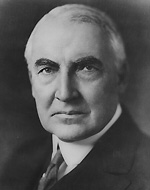 Warren G.
Harding
was the fifth and final dead president, and the 27th overall, that my
wife Debbie and I visited on "The Five
DPOTUS Tour '05".
Along with the dead presidents, we picked up
dead vice presidents, dead supreme court chief justices and losing
presidential candidates. We started out from Bayonne early in the
morning on Saturday, August 27. We drove through Pennsylvania and into
Ohio. We stopped in Fremont, Ohio to visit Rutherford B. Hayes. The
next day we continued, with numerous
stops, to Chicago. After spending the week in Chicago, we
headed on to Iowa to get Herbert Hoover and then back to Springfield,
Illinois. The next morning we visited Abraham Lincoln and then headed
off to Indianapolis, Indiana to see Benjamin Harrison, then on to
Dayton, Ohio for the night. The next
day, after stopping in Columbus, we headed north toward Marion, Ohio
and Warren G. Harding.
Warren G.
Harding
was the fifth and final dead president, and the 27th overall, that my
wife Debbie and I visited on "The Five
DPOTUS Tour '05".
Along with the dead presidents, we picked up
dead vice presidents, dead supreme court chief justices and losing
presidential candidates. We started out from Bayonne early in the
morning on Saturday, August 27. We drove through Pennsylvania and into
Ohio. We stopped in Fremont, Ohio to visit Rutherford B. Hayes. The
next day we continued, with numerous
stops, to Chicago. After spending the week in Chicago, we
headed on to Iowa to get Herbert Hoover and then back to Springfield,
Illinois. The next morning we visited Abraham Lincoln and then headed
off to Indianapolis, Indiana to see Benjamin Harrison, then on to
Dayton, Ohio for the night. The next
day, after stopping in Columbus, we headed north toward Marion, Ohio
and Warren G. Harding.Harding tomb was easy to find. There were signs pointing to right direction once we got off of the highway (route 95). The memorial, which looks like a round Greek temple, is on the southeast corner of Vernon Heights Boulevard and Delaware Avenue in a 10-acre park surrounded by Marion Cemetery (where his parents are buried). It's easy to spot from the road. They even have an area to park your car.
His Victorian style home, at 380 Mt. Vernon Avenue, where he began his famous "front porch" campaign, is north of the memorial. The restored house was built in 1891 and contains almost all original furnishings owned by President Harding and his wife Florence. Adjacent to the Harding Home is a press house used during the 1920 campaign which now serves as a museum dedicated to President and Mrs. Harding's lives. However, it is open only on weekends from April through the end of October except during the summer months when its open Wednesday through Sunday.
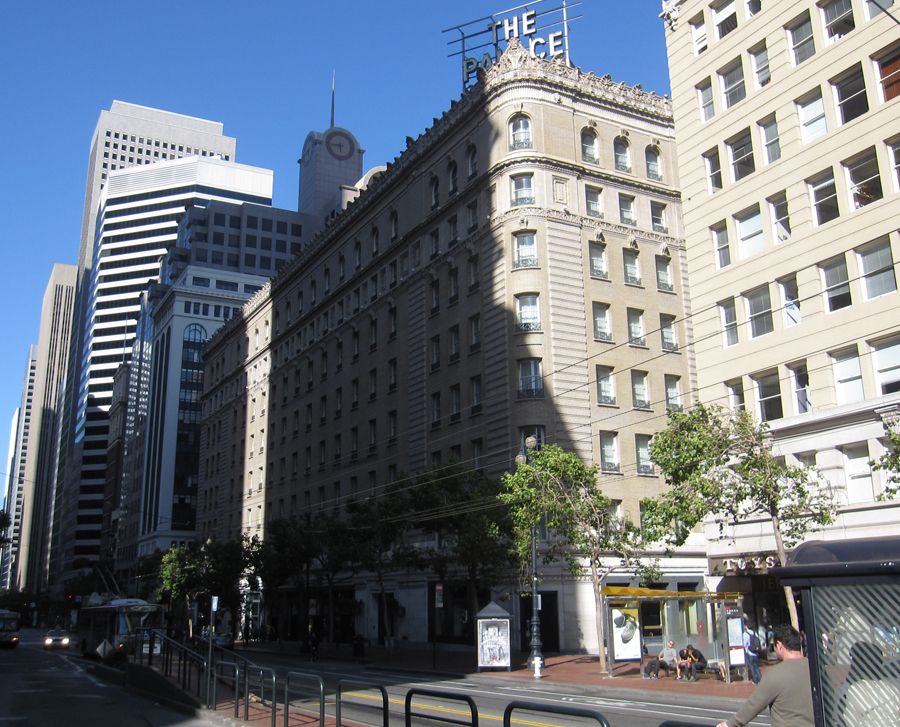 Harding was
the eldest of the eight children of Dr. George Harding and Phoebe
Dickerson Harding. While a teenager, Harding's father acquired The Argus, a local weekly
newspaper. It was here that Harding learned the basics of the newspaper
business. After graduation from Ohio
Central
College (later Muskingum College), Harding
moved to
Marion, Ohio, where with two friends, he purchased the failing Marion Daily Star. Harding made the
Marion Daily Star one of the
biggest newspapers in the county.
Harding was
the eldest of the eight children of Dr. George Harding and Phoebe
Dickerson Harding. While a teenager, Harding's father acquired The Argus, a local weekly
newspaper. It was here that Harding learned the basics of the newspaper
business. After graduation from Ohio
Central
College (later Muskingum College), Harding
moved to
Marion, Ohio, where with two friends, he purchased the failing Marion Daily Star. Harding made the
Marion Daily Star one of the
biggest newspapers in the county. In 1891, Harding married Florence Kling (who he called the 'Duchess'), an older woman, a divorcee and the mother of a young son. She had pursued him persistently, until he reluctantly surrendered and proposed. Florence's father, Amos Kling, was Harding's political nemesis. Kling disowned his daughter and even forbade his wife to attend her wedding. He would not speak to his daughter or son-in-law for eight years.
[PHOTO: Palace Hotel in San Francisco where Harding died in Room 8064 an eighth floor suite that overlooks Market Street]
The couple complemented one another with Harding's affable personality balanced his wife's no-nonsense approach to life. Florence Harding inherited her father's determination and business sense and turned the Marion Daily Star into a profitable business. She has been credited with helping Harding to achieve greater things than he could have done alone, leading to speculation that she later pushed him, almost against his will, all the way to the White House.
As a Republican and an influential newspaper publisher with a flair for public speaking, Harding was elected to the Ohio State Senate in 1899. He served four years before being elected lieutenant governor of Ohio, a post he occupied from 1903 to 1905. His leanings were conservative, and his record in both offices was relatively undistinguished. At the conclusion of his term as lieutenant governor, Harding returned to private life. Re-entering politics five years later, Harding lost a race for governor in 1910 but won election to the United States Senate in 1914. He served in the Senate from 1915 until his inauguration as President on March 4, 1921, becoming the second sitting Senator to be elected President of the United States.
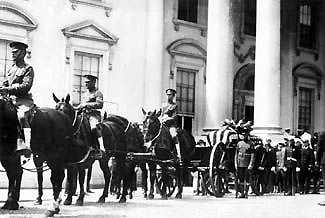 As with his
first term as Senator, Harding had a relatively undistinguished record,
missing over two-thirds of the roll-call votes. Among them was the vote
to send the 19th Amendment (granting women's suffrage) to the states
for ratification, a measure he had supported. Harding was a strong
opponent of President Woodrow Wilson's proposal to create a League of
Nations, and he made a speech against its formation, claiming it was a
mockery of American democracy.
As with his
first term as Senator, Harding had a relatively undistinguished record,
missing over two-thirds of the roll-call votes. Among them was the vote
to send the 19th Amendment (granting women's suffrage) to the states
for ratification, a measure he had supported. Harding was a strong
opponent of President Woodrow Wilson's proposal to create a League of
Nations, and he made a speech against its formation, claiming it was a
mockery of American democracy.[PHOTO: Harding's casket can be seen in the funeral procession in front of the White House]
At the 1920 Republican National Convention in Chicago, Harding who was relatively unknown outside his own state, was a true “dark horse” candidate. However, he won the nomination due to the political maneuverings of his friends after the nominating convention had become deadlocked. Republican leaders met in a smoke-filled room at the Blackstone Hotel in Chicago to end the deadlock. Before receiving the nomination, he was asked whether there were any embarrassing episodes in his past that might be used against him. He had a longstanding affair with the wife of an old friend and he was a social drinker. Despite this, Harding answered “No” and the Party moved to nominate him, only to discover later his relationship with Carrie Fulton Phillips. The Republican Party gave her a trip out of the country and the affair ended. Also, Mrs. Harding's newlywed brother and his bride also received an all expense-paid tour of Europe from the Harding's. The bride was a Catholic at a time when Catholics were viewed as a liability in American politics.
In the 1920 general election, Harding ran against Democratic Ohio Governor James M. Cox, whose vice presidential candidate was Assistant Secretary of the Navy Franklin D. Roosevelt. The election was seen in part as a referendum on whether to continue with the “progressive” work of the Woodrow Wilson administration or to revert to the “laissez-faire” approach of the William McKinley era. Harding ran on a promise to “Return to Normalcy”, a term which reflected: a renewed isolationism in reaction to World War I, a resurgence of nativism and a turning away from the government activism of the Teddy Roosevelt/Woodrow Wilson reform era.
Harding's “front porch campaign” during the late summer and fall of 1920 captured the imagination of the country. Not only was it the first campaign to be heavily covered by the press and to receive widespread newsreel coverage, but it was also the first modern campaign to use the power of Hollywood and Broadway stars who traveled to Marion for photo opportunities with Harding and his wife. Al Jolson, Lillian Russell, Douglas Fairbanks and Mary Pickford were among the conservative-minded luminaries to make the pilgrimage to central Ohio. Business icons Thomas Edison, Henry Ford and Harvey Firestone also lent their cachet to the campaign. From the onset of the campaign until the November election, over 600,000 people traveled to Marion to participate. The campaign owed a great deal to Florence Harding, who played perhaps a more active role than any previous candidate's wife in a presidential race. She cultivated the relationship between the campaign and the press. Mrs. Harding even went so far as to coach her husband on the proper way to wave to newsreel cameras to make the most of coverage. The campaign also drew upon Harding's popularity with women. Considered handsome, Harding photographed well compared to Cox. However, it was Harding's support for women's suffrage in the Senate that made him extremely popular with women.
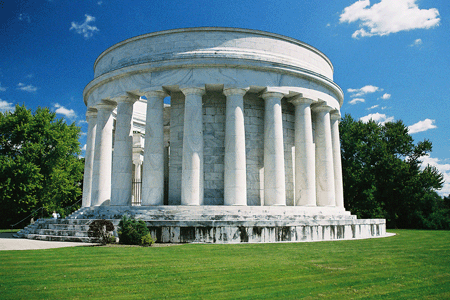 The election
of 1920 was the first in which women could vote nationwide (the 19th
Amendment had just passed). Harding received 61% of the national vote
and 404 electoral votes, an unprecedented margin of victory. Cox
received 36% of the national vote and 127 electoral votes. Socialist
Eugene V. Debs, campaigning from Federal prison (in prison for
opposing the draft;), received 3%
of
the national vote. Harding is the only U.S. president to be elected on
his birthday, November 2 (it was his 55th). Harding also would be the
first U.S. president to ride to his inauguration in an automobile.
The election
of 1920 was the first in which women could vote nationwide (the 19th
Amendment had just passed). Harding received 61% of the national vote
and 404 electoral votes, an unprecedented margin of victory. Cox
received 36% of the national vote and 127 electoral votes. Socialist
Eugene V. Debs, campaigning from Federal prison (in prison for
opposing the draft;), received 3%
of
the national vote. Harding is the only U.S. president to be elected on
his birthday, November 2 (it was his 55th). Harding also would be the
first U.S. president to ride to his inauguration in an automobile.The administration of Warren G. Harding followed the Republican Party platform approved at the 1920 Chicago convention. The thrust of the administration was to return the nation to a period in time when business forces, not government watchdog agencies, minded the business of the nation. Harding also believed in the clear separation of powers; that it was the Congress that was responsible for legislation, and it was Harding’s duty to ensure that it was signed into law. Harding also held high regard for the U.S. Supreme Court and believed that the Court’s role was to act as a safety net for Constitutional matters on behalf of the nation, its interests and most importantly, its citizens. To solidify that notion, he nominated President William Howard Taft for the position of Chief Justice.
Harding’s brief tenure in office has been widely characterized as one in which the President did little aside from play poker with cronies or golf with friends. Harding never really liked being president, which he once described as being "in jail" and another time as "hell." Though Harding himself was an honest man, he appointed many men to positions that caused scandals to his administration. “My God, this is a hell of a job!” Harding said. “I have no trouble with my enemies, but my damn friends, my God-damned friends...they're the ones that keep me walking the floor nights!” The most famous being the Teapot Dome Scandal of 1922 which exposed corruption in his own Cabinet. Following the exposure of Teapot Dome, Harding’s popularity plunged from the record highs it had been at throughout his term (of course, he was dead by then).
In June of 1923, Harding set out on a cross-country “Voyage of Understanding”, planning to meet ordinary people and explain his policies. During this trip, he became the first president to visit Alaska (it wouldn't become a state until 1959). Rumors of corruption in his administration were beginning to circulate in Washington by this time, and Harding was profoundly shocked by a long message he received while in Alaska, apparently detailing illegal activities previously unknown to him.
At the end of July, while traveling south from Alaska through British Columbia, on the final leg of a tour, he developed what was thought to be a severe case of food poisoning. Dr. Charles Sawyer, a friend of his wife, who was traveling with the presidential party thought he was ill from some tainted crab legs. Sawyer was a poor doctor whose remedies made Harding's medical condition worse. Arriving at the Palace Hotel (at 2 New Montgomery Street, just south of Market Street - photo above left) in San Francisco, he developed pneumonia. While lying in a bed in the hotel room his wife read a favorable article to him from the Saturday Evening Post. Happy to hear something positive, in light of all the scandals appearing, he asked her to read some more to him. While she was doing it, Harding died of a heart attack.
Harding died of either a heart attack or a stroke at 7:35 p.m. on August 2, at the age of 57. The formal announcement, printed in the New York Times of August 2, 1923, stated that "A stroke of apoplexy was the cause of death." He had been ill exactly one week. The cause of death was first said to have been food poisoning acquired during a stop-over in Vancouver, British Columbia. It was later believed to be apoplexy or a stroke. Medical scholars now believe that Harding died of end-stage heart disease. With Dr. Sawyer's recommendation, Mrs. Harding refused permission for an autopsy to be performed, which soon led to speculation that the President had been the victim of a plot and had been poisoned by someone. Even his wife was rumored to be in on it though nothing was ever proven.
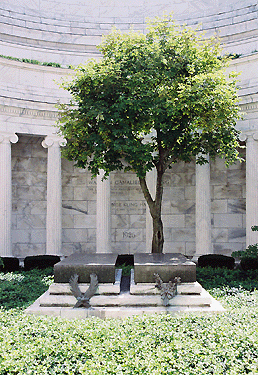 Following his
death, Harding's body was returned to Washington, where it was placed
in the East Room of the White House pending a state funeral at the
United States Capitol. White House employees at the time were quoted as
saying that the night before the funeral, they heard Mrs. Harding speak
for more than an hour to her dead husband. The most commonly reported
(though never verified) remark attributed to Mrs. Harding at this time
was “They can't hurt you now, Warren.”
He was succeeded by Vice President Calvin Coolidge. Florence Harding,
who suffered from kidney problems, died the following year of end-stage
renal disease.
Following his
death, Harding's body was returned to Washington, where it was placed
in the East Room of the White House pending a state funeral at the
United States Capitol. White House employees at the time were quoted as
saying that the night before the funeral, they heard Mrs. Harding speak
for more than an hour to her dead husband. The most commonly reported
(though never verified) remark attributed to Mrs. Harding at this time
was “They can't hurt you now, Warren.”
He was succeeded by Vice President Calvin Coolidge. Florence Harding,
who suffered from kidney problems, died the following year of end-stage
renal disease.After their deaths, the bodies of the Harding’s were entombed in the “receiving vault” of the Marion Cemetery. Once the Harding Memorial was completed in 1927, the bodies were reinterred in the Memorial’s sarcophagus and it was sealed. The Harding Memorial was dedicated in 1931 by President Herbert Hoover (they delayed the dedication until enough of the Teapot Dome scandal had faded from the American consciousness).
Begun in 1926 and finished in the early winter of 1927, the structure is built of white marble. Designed by Henry Hornbostel, Eric Wood and Edward Mellon, the structure is 103 feet in diameter and 53 feet high. The open design honors the Harding’s wishes that they be buried outside. Columnist Dennis Roddy wrote, "Warren and Florence Harding lie entombed beneath 17 feet of solid concrete -- perhaps safe from exhumation by DNA sleuths. But it almost seems as if, upon his passing, the nation wanted to bury the hell out of Warren Gamaliel Harding."
The memorial is also important in it is the last of the elaborate presidential tombs, a trend that began with the burial of President James A. Garfield in 1881. Since President Calvin Coolidge, Harding's successor, Presidents have chosen burial plot designs that are simpler, or combined those with their library sites. A popular myth with the residents of Marion is that Harding's dog, "Laddie Boy," is buried in the memorial with him. The dog is actually buried in Boston.
Despite being a newspaper man, Harding was notorious for his verbal gaffes, such as his comment "I would like the government to do all it can to mitigate, then, in understanding, in mutuality of interest, in concern for the common good, our tasks will be solved." His errors were compounded by his insistence on writing his own speeches. Harding poor grammar and made-up words led writer H.L. Mencken to it the "worst English that I have ever encountered" and to refer to it as "Gamalielese." Upon Harding's death, poet e. e. cummings said "The only man, woman or child who wrote a simple declarative sentence with seven grammatical errors is dead." Harding's most famous "mistake" was his use of the word "normalcy" when the more correct word to use at the time would have been "normality." Harding decided he liked the sound of the word and made "Return to Normalcy" a recurring theme. When he used the word, he was referring to bringing America back to the 19th century and a moral small town life. Of course, Harding did follow it himself with his drinking (during Prohibition), poker playing and secret get togethers in the White House with his mistress Nan Britton.
Because of several scandals involving others in his administration, after his death Harding gained a reputation as being one of America's least successful Presidents. In numerous polls of historians, Harding is ranked as one of the worst, or even dead last. Harding did have some positive attributes to his administration. He pardoned socialist Eugene V. Debs and he made a speech in Alabama advocating civil rights for Blacks.
Here are some webpages of interest:
The Tea Pot Dome Scandal
The Mysterious Death of Warren G. Harding
The Warren G. Harding Rail Car in Fairbanks, Alaska
From Hero to Zero: The Lessons of Warren G. Harding
The Marion Area Convention & Visitors Bureau
White House Biography of Warren G. Harding
The Internet Public Library Biography
The American President Biography